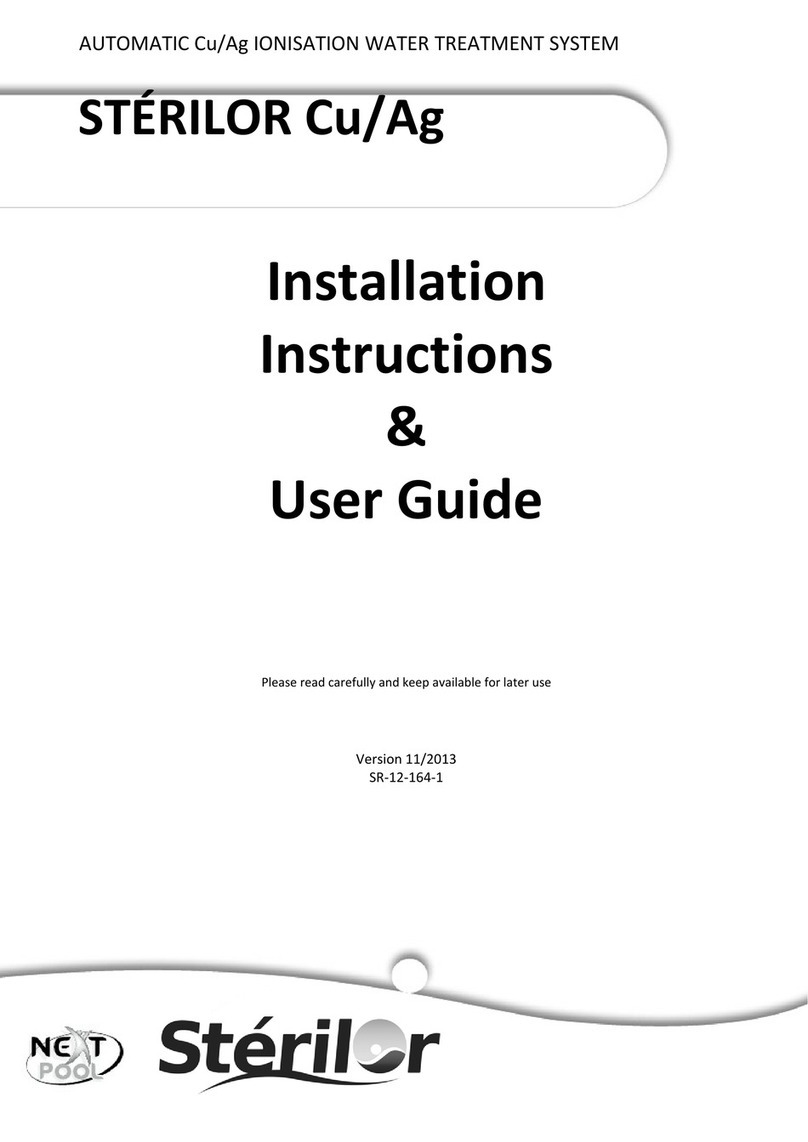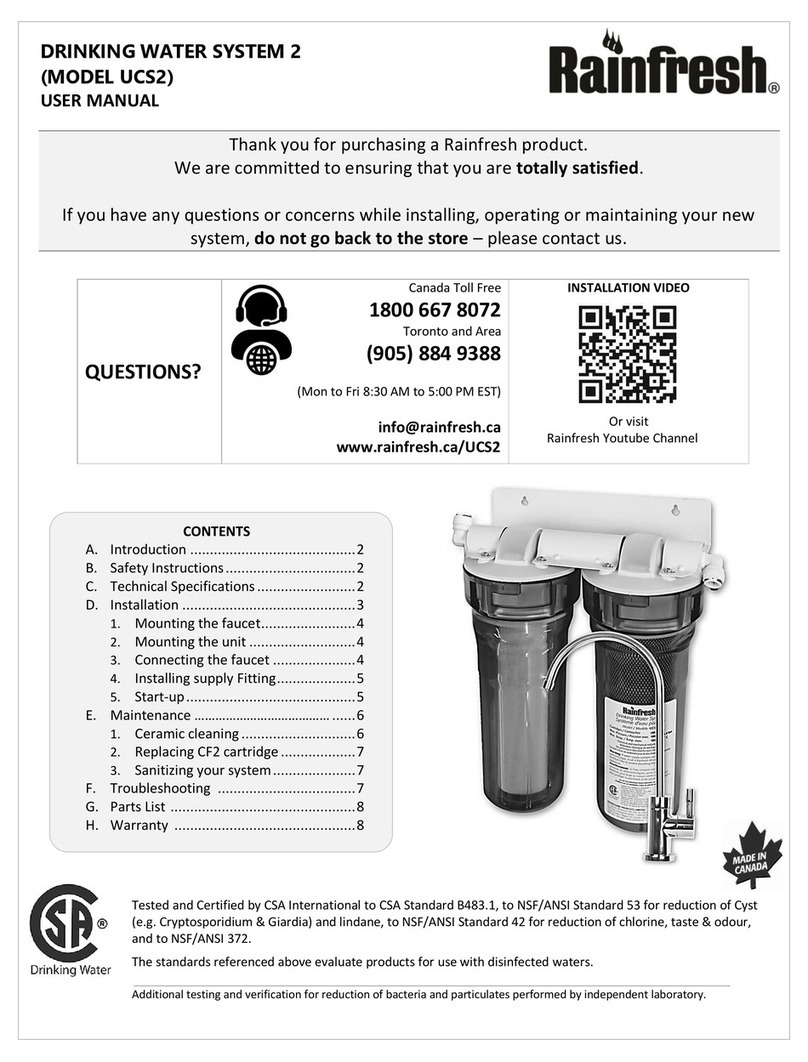
Trouble shooting the TDS meter
Malfunction
Solution
The display goes off after approx.
20 seconds.
This is not a malfunction; it automatically switches off to conserve the
batteries. Press the "POWER" button again.
The inlet value (IN) shows -000-
The sensor in the inlet has no measuring values or is defective. Use the flush
valve to check whether the whole unit is full of water. If this is the case and
the malfunction persists, then the measuring device and sensor must be
replaced.
The outlet value (OUT) shows -
000-
Check the water meter to see whether the whole unit is full of water. If this is
the case, then this is not a malfunction, instead it is a correct measurement of
the demineralized water. If it can be assumed that the cartridge is exhausted
(due to the amount of treated water) and the display remains on -000-, then
the measuring device should be replaced along with the sensor.
The display remains empty, even
after pressing the
"POWER" button.
Change batteries. See Fig 6 below.
The display flutters, is difficult to
read or contains illegible
characters.
Change batteries. See Fig 6 below.
The display shows -ERR-
Measuring device malfunction. Reset by switching on and off quickly 2-3
times until the display is normal again. Otherwise, remove and reinsert the
batteries.
The resin seems to be used faster
(increased TDS) than the water
There probably is not a malfunction, instead the untreated water contains
dissolved solids (sulfate, nitrate, chloride) in addition to lime, which are
removed and thus reduce the capacity.
Otherwise there is a flow measurement malfunction (see below)
Changing the batteries
Figure 6: Changing the batteries
Flow rate measurement device malfunction
The water meters appear to be too
slow or to not run at all.
A fine sieve is installed in front of the outlet valve in order to prevent resin
from leaking into the system from the apparatus due to an operation failure. If
resin does leak out of the cartridge, it is caught in the fine sieve and interrupts
the function of the armatures. Solution: Rinse and clean armatures out.
First, loosen the
metal housing Pull the measuring device
upward out of the holder.
Loosen and remove
the four metal screws
on the back
Remove back side
and replace 2 AA
batteries.


























